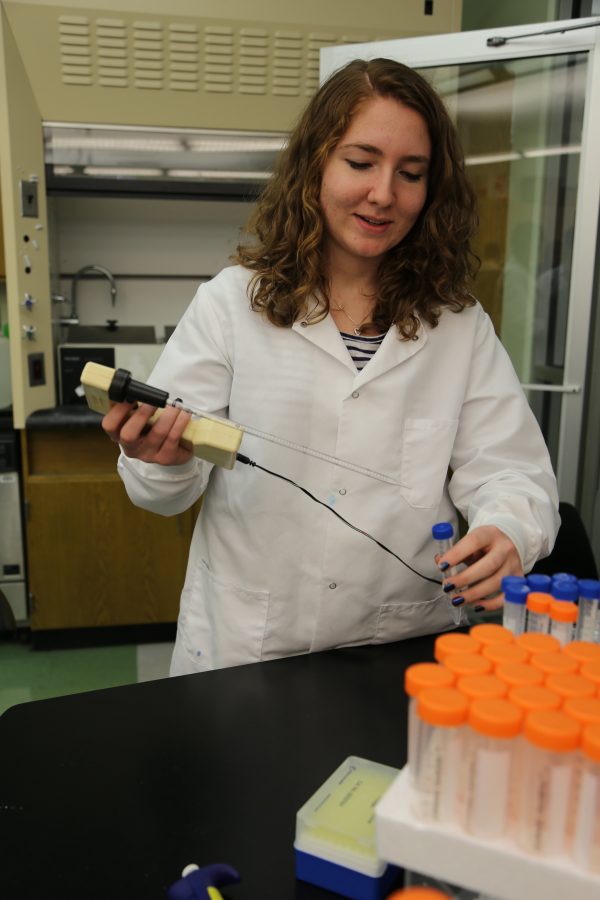Regeneron Semifinalist: Sabrina Gjerswold-Selleck

Sabrina Gjerswold-Selleck is one of the eight BCA semifinalists of the Regeneron Science Talent Search, formerly known as “Intel.” The Chronicle was lucky enough to catch up with her and find out more about her research, motivations, and reflections on the experience.
For more information on the Regeneron Science Talent Search, and links to interviews with seven of our other semifinalists, read “Regeneron Science Talent Search: BCA Boasts 8 Semifinalists.”
At the time, a family friend was fighting breast cancer and I was inspired to create a research project studying breast cancer that could potentially help with the treatment of others in the future.
Can you explain your research?
My project is on the role of a protein called hnRNPM in epithelial mesenchymal transition (EMT), a key process in breast cancer metastasis that allows tumor cells to invade other tissues and organs by changing the characteristics of the cell’s’ phenotype. I downregulated hnRNPM in breast cancer cells and induced the cells to undergo EMT with a growth factor called TGFβ. I measured migration, cellular proliferation, and the expression of proteins like vimentin, β1 integrin, 1L6, and Akt that are known to be involved in EMT. I found that expression of these proteins decreased significantly, indicating their significance in hnRNPM-mediated EMT. My results suggest that hnRNPM is critical for expressing characteristics associated with EMT and additionally suggest that potential of hnRNPM to cause mesenchymal characteristics in epithelial cells, explaining the reported mix phenotype of this cell line.
How did you get the idea for your project? Is it personally important to you?
When I was first searching for a research topic, I knew that I wanted to study a disease that affects someone close to me and my family. At the time, a family friend was fighting breast cancer and I was inspired to create a research project studying breast cancer that could potentially help with the treatment of others in the future.
While reading through articles about breast cancer, I discovered a unique topic related to the metastasis of breast cancer through a process called epithelial-mesenchymal transition and I was excited by the potential opportunity. To my knowledge after reading through various research studies, only one paper had ever been written about the specific protein discussed called heterogeneous nuclear ribonucleoprotein M (hnRNPM) and its relation to EMT, so I thought that it would be interesting to continue studying the role of this protein in breast cancer metastasis.
What was the biggest challenge you faced while doing research?
The biggest challenge for me was making my project unique and taking it in a different direction from the study I originally based my research on. I had to learn how to develop my hypothesis as I learned more about the protein I was studying through different experiments. Eventually, I realized that the results of each essay or test pose many opportunities and ways to take my research further. In the end, my conclusions were not what I expected them to be because I had to change my hypotheses as my project evolved.
How did it feel to win the Regeneron award?
Winning the Regeneron award was very exciting and in a way it helped to make me feel like the hours spent in the lab had paid off. I was in a lab meeting at my internship when I read the list of semifinalists and I was really happy, but I had to calmly keep a straight face so it looked like I was paying attention to the meeting, which was a little difficult.
What did you learn / take away from the Regeneron Science Talent Search experience?
The goal of Regeneron is to continue inspiring young people to engage in science and I think that something to take away from it is that even students in high school can create projects with the potential to make a significant impact if we set our minds to it and keep trying to implement our ideas.


